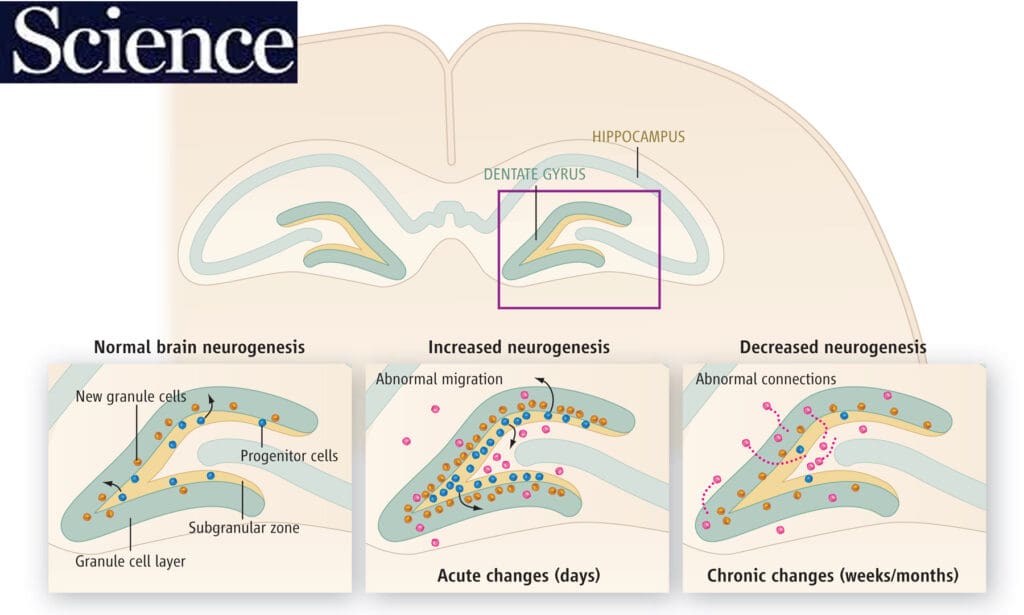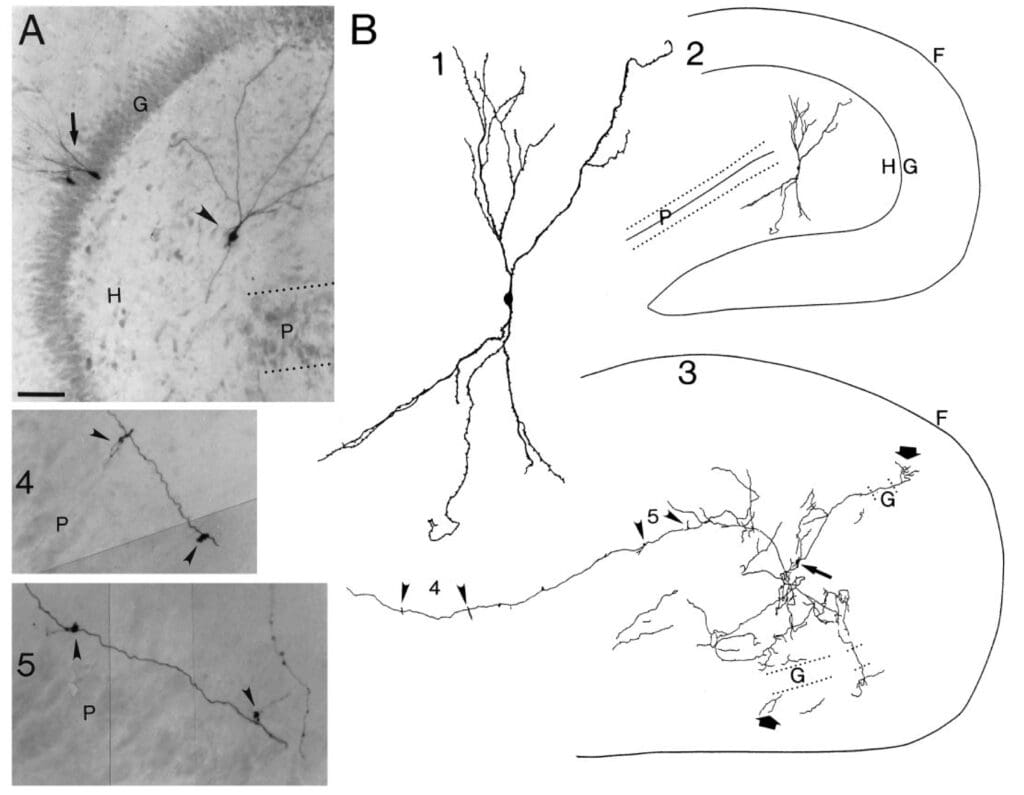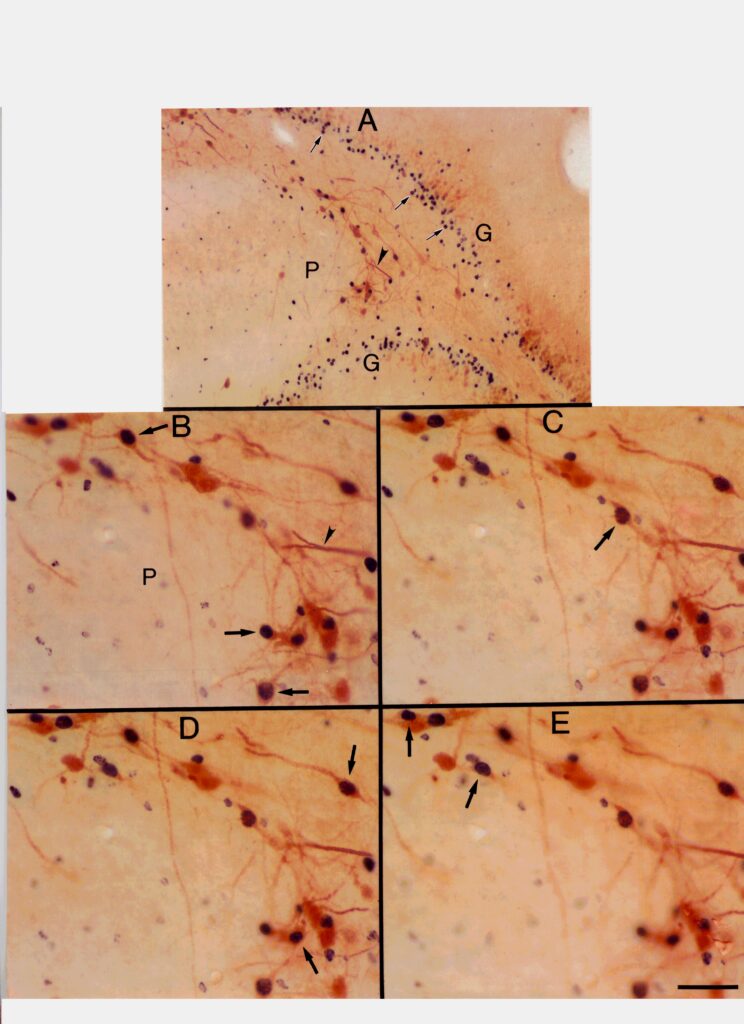
How adult neurogenesis goes wrong in disease
Left: Normal neurogenesis in the adult brain occurs in locations such as the dentate gyrus.
Center: In epilepsy there are many changes to the dentate gyrus and one is abnormal production of new neurons.
Right: Over time, newborn neurons produce connections to other neurons that appear to promote seizures.
Adult neurogenesis
Adult neurogenesis is the birth of new neurons in the adult brain. Although most neurons are born prenatally, some are born after birth and in adulthood. Although those born in adulthood are few in number, they appear to be essential for normal brain function.
Adult neurogenesis is prominent in the dentate gyrus. The adult-born neurons mainly become excitatory granule cells, the primary cell type. We have been interested in the dentate gyrus because we found adult-born neurons play important roles there in the context of epilepsy.
In out first studies we found adult-born neurons in the hilus, an abnormal location for granule cells ("ectopic" granule cells; Scharfman et al., J Neurosci, 2000). There the ectopic granule cells seemed to promote seizure activity, and after collaborating with the laboratory of Jeannie Hsieh, evidence was acquired to support that idea (Cho et al., Nat Med., 2015).
Later studies showed that normal adult-born granule cells - not the ectopic granule cells - had inhibitory effects on the granule cell population, at least when they were young (Drew et al., Hippocampus, 2015). This inhibitory effect was due to activation of GABAergic neurons. This work was part of a collaboration with the laboratory of Rene Hen.
Consistent with these inhibitory effects of young adult-born granule cells, we found that they inhibited seizures in the normal brain, and reduced damage caused by severe seizures (Iyengar et al., Exp. Neurol., 2015; Jain et al., Hippocampus, 2019).
Recent work suggests that deleting the normal adult-born cells can actually prevent epilepsy (Jain et al., eLife, in press).
Thus, there are diverse roles of adult-born granule cells. In the normal brain, those that are normal seem to be "good" whereas adult-born ectopic cells in the epileptic brain seem "bad."

Left: A. An example of an ectopic granule cell in the hilus. B. Another ectopic granule cell (1) with its position in the dentate gyrus (2) and axon (3). The axon terminals are characterized by giant terminals (4,5). From Scharfman et al., J Neurosci., 2000.

